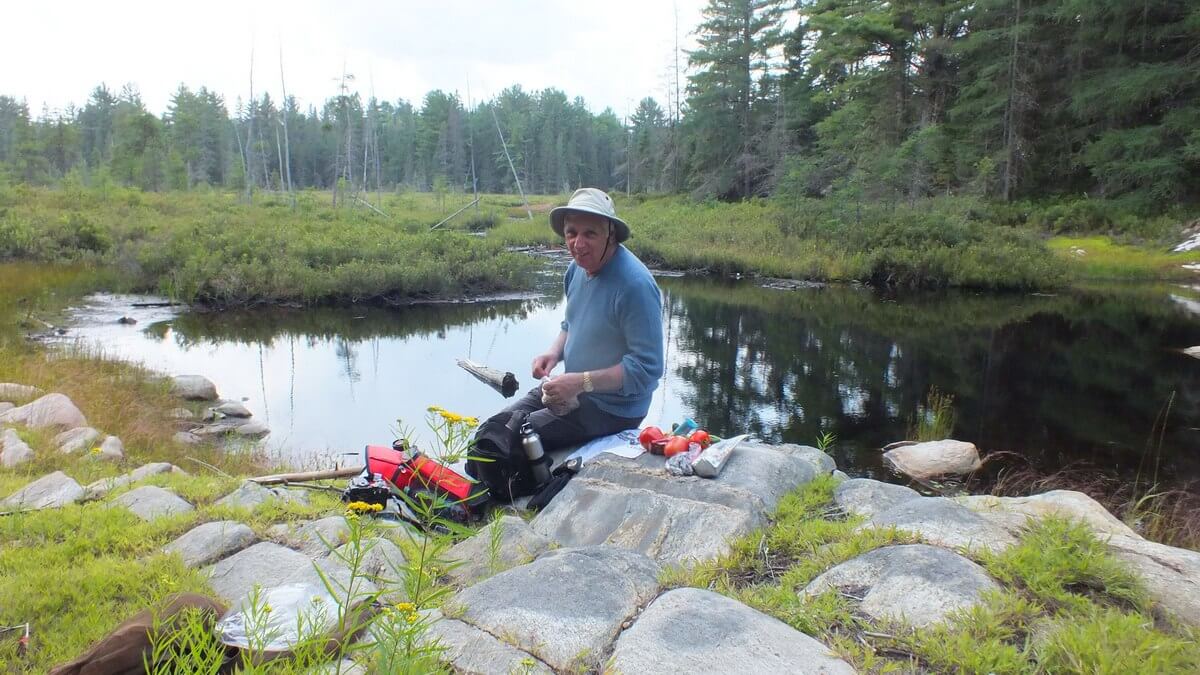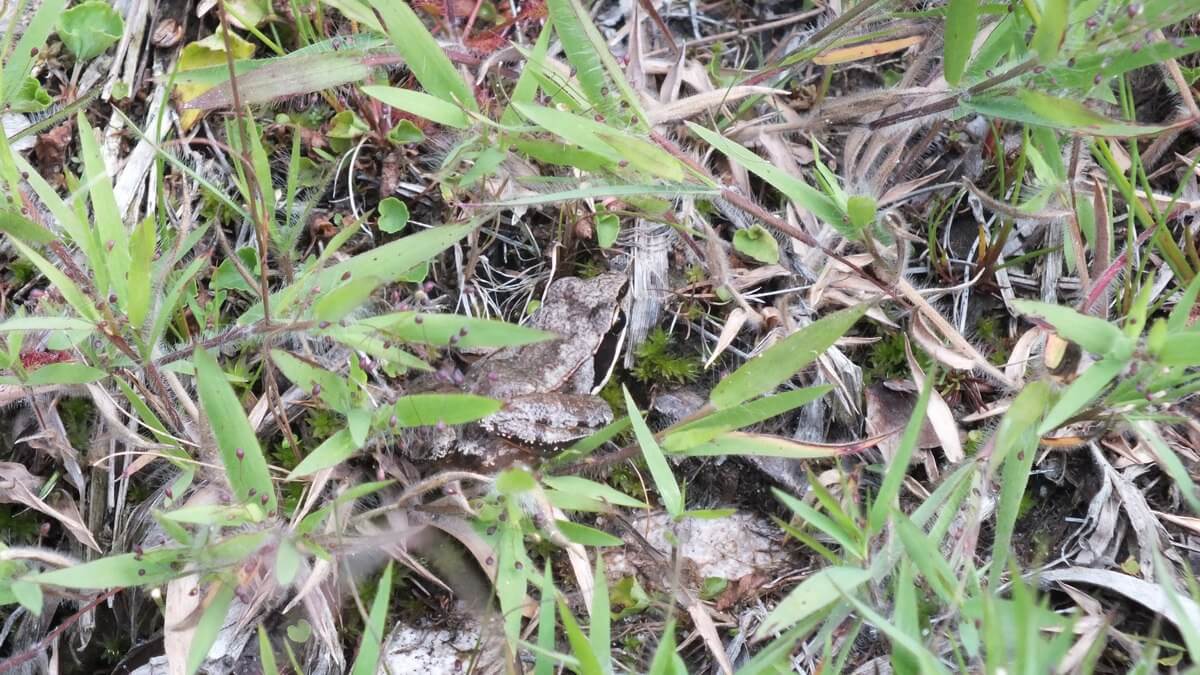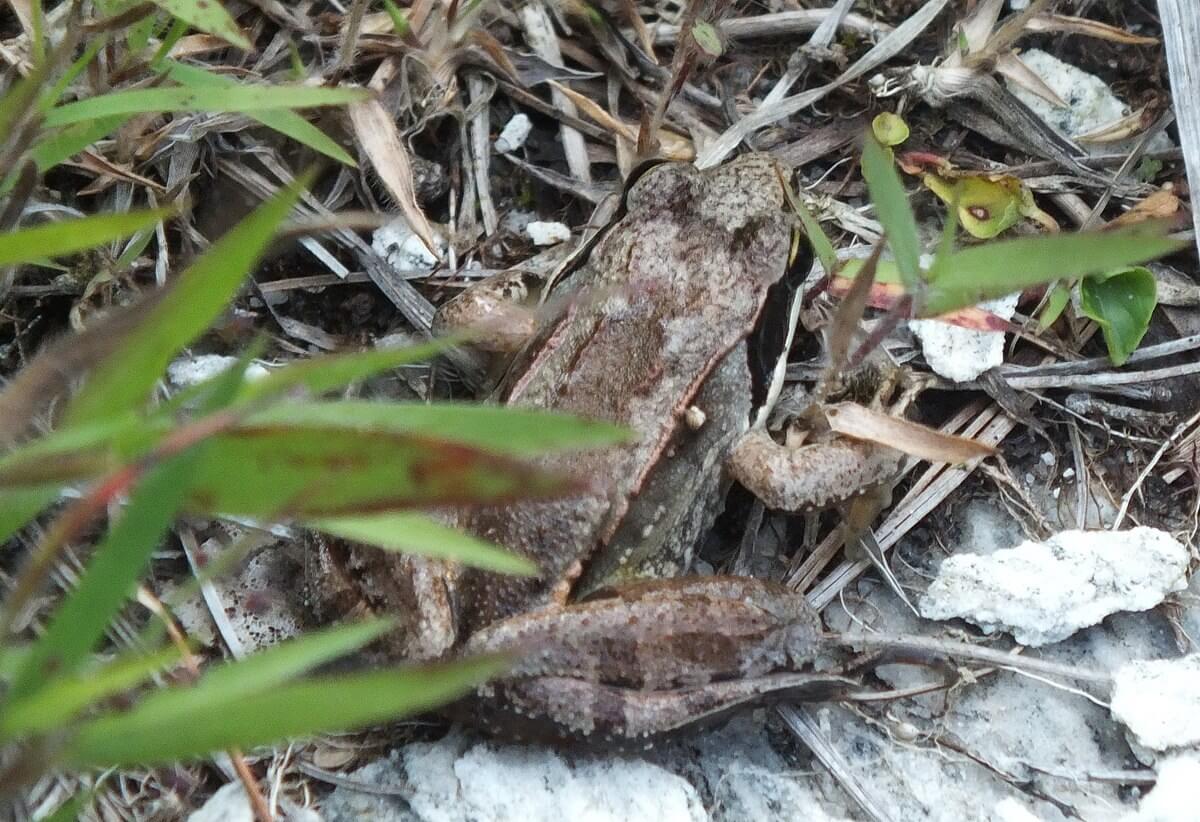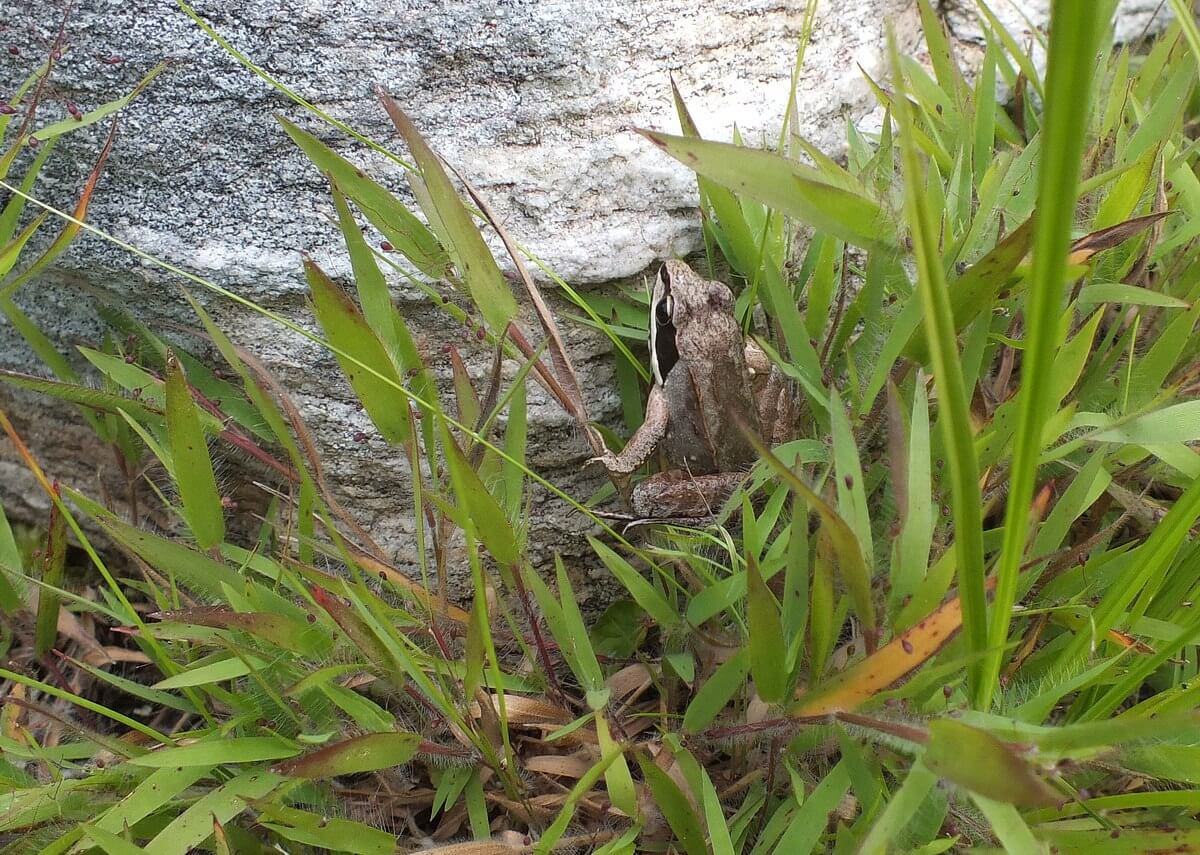Wood Frog on Algonquin Park’s Mizzy Lake Trail
Earlier one summer, Bob and I undertook to hike the Mizzy Lake Trail in Algonquin Provincial Park. It is touted as one of the more difficult trails in the Park but also the trail along which hikers have the best chance of sighting wildlife. The 11-kilometre loop skirts nine small lakes and ponds while passing through dense forest. We enjoyed a clear day with intermittent clouds that gave brief reprieves from the blazing sun that threatened to discourage any wildlife from making a show of themselves along the trail. Still, we sighted many turtles and frogs such as this Wood Frog (Lithobates sylvaticus).
Map courtesy: Algonquin Adventures
Having set off at 9 a.m. from the trailhead along Arowhon Road, just in off Highway 60, Bob and I were ready for our picnic lunch when we arrived at a set of small ponds near the top of the hiking loop, just past Wolf Howl Pond on the trail map, so we detoured to the shore of one pond on a cowpath that led to the edge of the still water.
A large boulder provided a convenient place to set up our food and park are weary bodies. It was about that time that I heard a small rustling in the nearby vegetation.
I could not see anything so moved in for a closer look and almost stepped on the well-camouflaged Wood Frog hunkered down in the silvery grey leaves of the ground cover. As I moved my camera into position, another, larger Wood Frog, made a quick escape from my looming shadow. Its leap was quick and long.
Wood Frogs are among the ten species of frogs and toads that live in Algonquin Park. It is their ability to hibernate successfully through the long, cold, harsh winters that allows them to survive there. Wood Frogs, for numerous reasons, have been the focus of considerable research with their tolerance for freezing temperatures being one of the areas of interest.
Adult Wood Frogs, like those in my photos, are brown with a dark eye mask, but they have the ability to change colour depending on their surroundings. Sometimes their skin may be tan or rust-coloured, but the diagnostic eye mask makes for a positive identification in all cases. Eventually, this small Wood Frog took a dive and disappeared beneath the underlying grey leaves that carpeted the hillock by the pond. Bob and I resumed our preparations for lunch.
Frame To Frame – Bob and Jean






